Our Favorite Hotels in Hakone
• 5-Star: Suishoen
• 4-Star: Byakudan
• 3-Star: Villa Bizan
• Ryokan: Hananoyado Fukuya
• For Families: Yumoto Fujiya
• For Couples: Odakyu Hotel de Yama
• For Hot Springs: Fujiya
• Near Odawara Station: Tenseien Annex
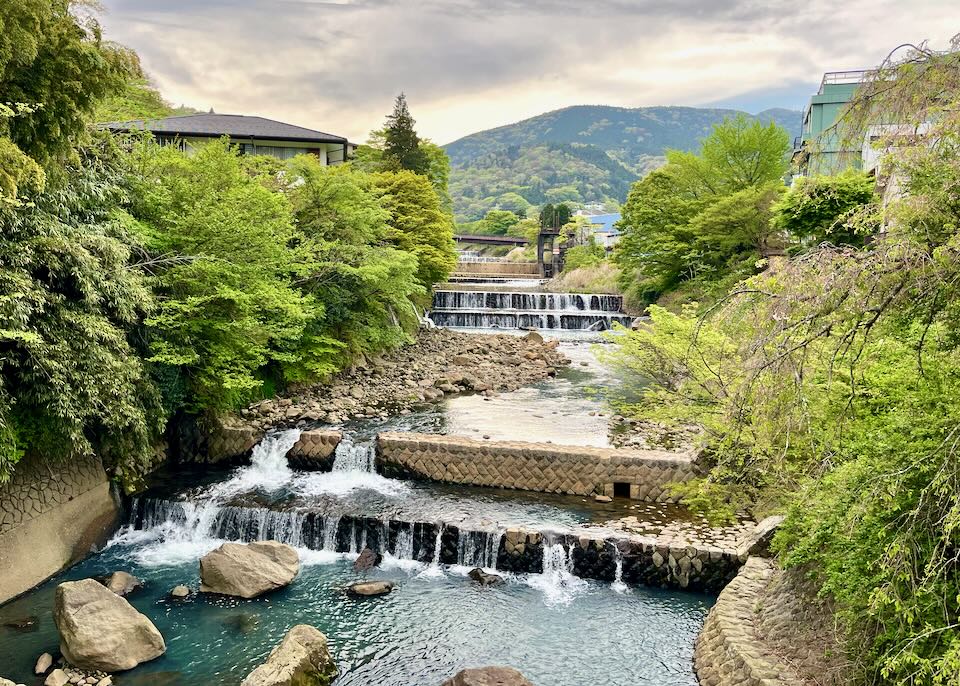
The Haya River between Kiga and Miyagino. Our favortie hotel here is Ajisai Onsen Ryokan
The Best Areas to Stay in Hakone
Hakone is one of Japan’s top tourist destinations and a short Shinkansen (bullet train) ride west of Tokyo. The beautiful region hosts part of Fuji-Hakone-Izu National Park, filled with forest-smothered mountains, alpine lakes, and hot springs. Hakone comprises seven villages in or around Mount Hakone, the giant volcano. But don’t worry – it last erupted in 1170. There are two vast, ancient calderas, well over 10 miles across, and it’s impossible to gain any sense of size on the ground (it just looks like you’re surrounded by mountains.)
A fabulous view of Mt Fuji from Onshi-Hakone Park.
Mount Fuji lies much further north in a separate part of the national park, but Hakone is famed for its mesmerizing views of the famous mountain. Hotels scatter across Hakone and can get fully booked during peak periods for late spring cherry blossom viewing, fall foliage, and major Japanese holidays.
The Hakone “Loop”
Most visitors experience Hakone on the “Circuit” or “Loop” (known as the Golden Route in Japanese.) It’s five forms of transportation from Hakone-Yumoto (or, by extension, Odawara) including; the train, cable car, ropeway, boat, and bus. Though it’s possible to complete the loop in a day, it’s much better to fully appreciate the area’s charms and attractions over three days. If you intend to complete the loop, buying one of the passes listed below is cheaper. The cable cars are especially pricey purchased separately.
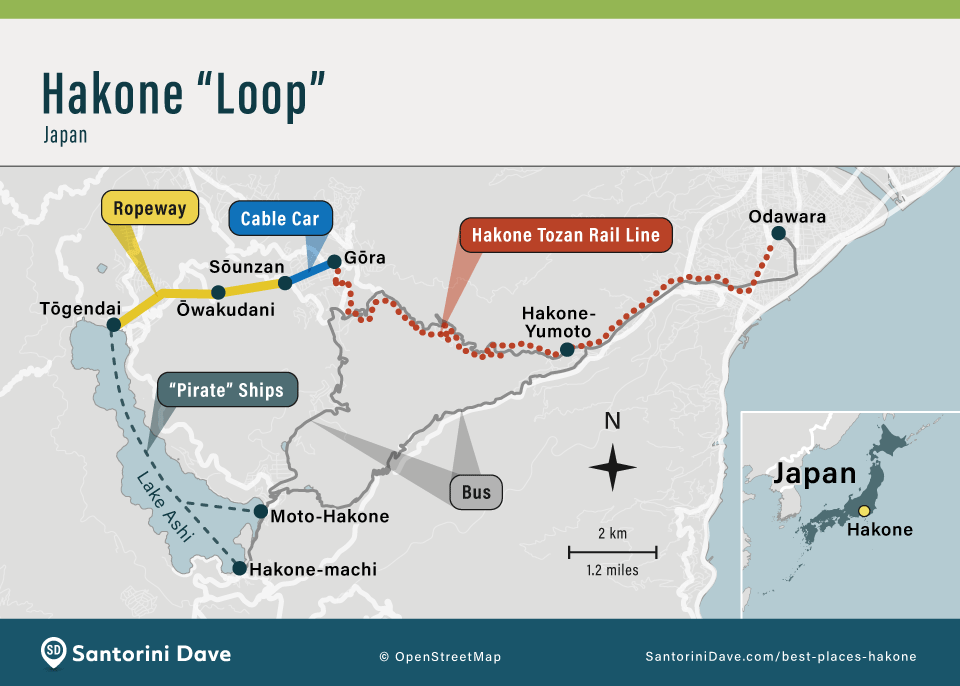
The “Loop” Route
The Hakone Tozan Line terminates at Gōra (35min), where the Hakone Tozan Cable Car (really a funicular railway) trundles up the slope to Sōunzan (10min). From here, you switch to the Hakone Ropeway (which is a cable car) to the top of the crater at Ōwakudani, then down to Lake Ashi at Tōgendai (30min without stopping at Ōwakudani). Then you board the bizarrely themed “pirate” ships across the lake (30min) to Hakone-machi or Moto-Hakone, where you can take buses back to Hakone-Yumoto (35min).
Trains from Tokyo to Odawara
- Odakyū-line trains run directly from Shinjuku (Tokyo) to Odawara and are covered by the Hakone Pass – 90 minutes
- Shinkansen (bullet train) from Tokyo to Odawara – 35 minutes.
Trains from Tokyo to Hakone-Yumoto
- “Romancecar” limited express runs to Hakone-Yumoto – 80 minutes.
Where to Stay in Hakone
Odawara Castle
The small city of Odawara is the easiest (and generally cheapest) but the least atmospheric place to stay. It’s on the main JR rail and bullet train line between Tokyo and Nagoya/Kyoto. Traveling from Odawara only adds 15 minutes each way to your day (compared to Hakone-Yumoto), and at night you’ll have much more shopping, eating, and drinking options. Odawara Castle is one of Japan’s most historically significant, though the current structure was rebuilt in the 1960s.
The traditional gateway to the region is Hakone-Yumoto, a small village at the bottom of the Haya River Gorge with a huge range of accommodations, often fully booked. It’s a good base for exploring the area, being the start and end of the “Loop” (Golden Route), but it’s not especially attractive, and there are much better places to stay further up the mountain.
Hakone Tozan Line trains and buses trundle up the Haya River Gorge to Miyanoshita and Kowakidani, home to iconic hotels like the Fujiya and tranquil hot spring resorts. The Okada Museum of Art and the vast Hakone Open-Air Museum are excellent art attractions.
The mountain railway ends at the tiny village of Gōra, another hub for boutique hotels, high on the slopes above the Haya River Gorge. Hakone Gōra Park is known for its blossoming flowers, while the Hakone Museum of Art displays ancient Japanese ceramics and porcelain.
The districts of Kiga and Miyagino are much quieter, secluded places to stay, accessible by bus, and on either side of the Haya River far below Gōra.
The Hakone Ropeway up to Ōwakudani overlooking the steam from geothermal activity.
From Gōra, the Hakone Tozan Cable Car runs up to Sōunzan, where you change to the Hakone Ropeway up to Ōwakudani, the highest point on the Loop and best known for its geothermal activity and views of Mount Fuji, but there’s nowhere to stay up here.
The Ropeway continues down the western slopes to Lake Ashi, a gorgeous crater lake that, for many, is the highlight of Hakone. It’s possible to stay in one of many beautifully located hotels in Tōgendai, the transport hub at the north end, Hakone-en in the middle, or at Hakone-machi and Moto-Hakone, at the busier southern end. Hakone-machi is home to the Hakone Sekisho Museum, with its authentic replica of a 17th-century guard post, and the Onshi-Hakone Park, with spectacular views of Mount Fuji.
Moto-Hakone’s biggest attraction is the Hakone Shrine, with long lines forming to take selfies at the famous “water gate” in the lake. From here you can hike the Old Tōkaidō Highway back towards Hakone-Yumoto or take a bus down the Sukumo River Valley, where there are a handful of high-end hotels and hot spring resorts, through the craft village of Hatajuku.
Finally, the Sengokuhara area lies north of Gōra and the Loop, offering a much quieter experience and access to some of the region’s best museums: Pola Museum of Art, Lalique Museum Hakone, and Hakone Venetian Glass Museum.
Hakone Hot Springs
The Fujiya Hotel features Meiji Era architecture designed in a pseudo Western style called giyōfū. The hotel has a wonderful spa and in-room natural hot-spring bathtubs.
For many visitors (especially domestic Japanese tourists), Hakone is primarily a hot-spring resort. Depending on how you count them, there are around 17 springs in Hakone, comprising everything from alkaline thermal waters to salt (sodium chloride) and gypsum (calcium-sulfuric acid) springs. Most have been piped into hot spring resorts (onsen), but a couple (like Dogashima) remain wild and untapped.
The 17 springs are: Yumoto, Tōnosawa, Ōhiradai, Miyanoshita, Dogashima, Kiga, Sokukura, Ninohira, Kowakudani, Gōra, Miyagino, Sengokuhara, Ubako, Ashinoyu, Yunohanazawa, Takogawa, and Lake Ashinoko.
The Hakone Tourist Information Center, open daily from 9 am to 5:45 pm, is just across the street from Hakone-Yumoto Station. Visit hakone-japan.com or the useful hakonenavi.jp for more information.
The Hakone “Loop” Travel Passes
The Hakone Tozan train line between Hakone-Yumoto and Gōra.
Investing in one of the many travel passes covering the Hakone area will usually save you money, especially if you intend to travel the “Loop.” Most passes cover all transportation and offer reduced entry fees to some sights. If you want to hike or just take buses in Hakone, the passes may not be worth it.
- Hakone Freepass – includes unlimited use of the whole Loop for two- or three-day options and a return Odakyū line trip from Shinjuku to Odawara. You can buy passes at Shinjuku, Odawara, and Hakone-Yumoto stations throughout the Hakone area, with prices depending on where you purchase them. For example, two days is ¥6,100/US$45 from Shinjuku but only ¥5,000/US$35 from Odawara.
- Hakone Tozan Train 1-Day Pass ( ¥1580) – if you’re going to explore destinations along the Hakone Tozan Line (between Odawara and Gōra).
- Fuji Hakone Three-Day Pass (¥9,340) – If you intend to travel between Hakone and the Fuji Five Lakes area (or vice versa). It offers the same as the Hakone Freepass plus transportation in the Fuji Five Lakes area (you must change buses in Gotemba to transfer between the Hakone area and Fuji Five Lakes).
The Best Places to Stay in Hakone
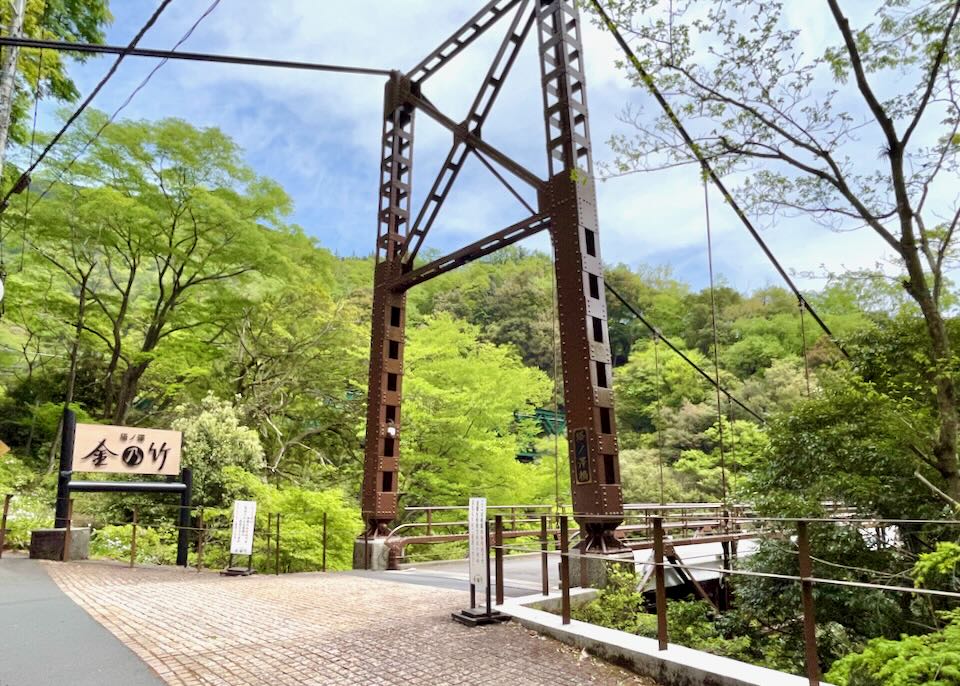
The suspension bridge that leads to the adults-only Kinnotake Tonosawa ryokan is surrounded by nature with private hot spring baths in Hakone-Yumoto.
- Best Luxury Hotels in Hakone
Byakudan • Kinnotake Tōnosawa • Fujiya • Suishoen • Hiramatsu • Hyatt • Seikansou- Best Boutique Hotels in Hakone
Villa Bizan • Zagakukan- Best Ryokans (Traditional Japanese Inns) in Hakone
Hananoyado Fukuya • Madoka no Mori • Washintei Hogetsu • Kijitei Hoeiso • Seikansou- Best Cheap Hotels in Hakone
Onsen Tsutaya • Asante Inn • Gaku • Family Lodge- Best Hostels in Hakone
HakoneHOSTEL1914 • Irori Guesthouse • K’s HouseBest Areas in Hakone for…
- Best Area to Stay for Sightseeing: Gōra or Hakone-Yumoto
The Gōra hillside.
Hakone is spread out with no obvious center, so where you stay depends mainly on your interests and hotel budget. It’s possible to move around and stay in two or more different areas, but if you’re aiming for a single base to explore the entire region, centrally located Gōra is the best option.
It’s got excellent transportation links to the rest of the park, to Hakone-Yumoto via the Hakone Tozan Railway, and to Lake Ashi via the Hakone Tozan Cable Car and Hakone Ropeway. Buses run down to the Haya River Gorge and north to Sengokuhara. Some of the area’s best restaurants are within walking distance, a long with Hakone Gōra Park, Hakone Museum of Art, and the Hakone Open-Air Museum.
Accommodations here are better quality than further down the valley, but there are plenty of good value options, too. The main downside is that beyond the tiny village center, everything is located on a fairly steep slope.
If you only intend to stay one or two days, Hakone-Yumoto is not a bad alternative, with a large range of accommodations (with lots of budget options) and restaurants, conveniently located at the foot of the Haya River Gorge and at the start/end of the “Loop” around the park. Transportation is good here – it’s the main bus and train hub for the region – but for longer stays, you’ll likely get tired of the journey up and down the mountain—one and a half hours.
- Best Area to Stay on a Budget: Hakone-Yumoto or Miyanoshita
K’s House hostels in Hakone Yumoto.
Convenient for transport and services (shops and restaurants), Hakone-Yumoto is the gateway to the region and offers some of the best value accommodations: K’s House, Guesthouse Azito, Oumiya, and Yumoto Station Hotel MIRAHAKONE are all excellent options (book well ahead). Even the bigger resort-style hotels like the Yumoto Fujiya Hotel are usually much cheaper than those further up the valley (and are especially good for families).
For a quieter experience with more character, consider the Miyanoshita area further up the valley by train. Hakone Onsen Guesthouse Tsutaya, HakoneHOSTEL1914, and Irori Guesthouse TENMAKU are all usually an excellent value up here.
- Most Romantic Area: Lake Ashi or Tōnosawa (Hakone-Yumoto)
Views of Mount Fuji from Odakyu Hotel de Yama.
It’s hard to beat Lake Ashi for its mesmerizing views, clear blue waters framed by mountains, red torii gates, and snow-topped Mount Fuji in the distance. It’s also possible to rent boats for private cruises. Once the day trippers have gone, the lakeside villages become far more tranquil, with some of the region’s best hotels and ryokans offering rooms with onsen (hot spring) pools, exceptional cuisine, and enchanting views across the water.
Hanaori can get busy but has some of the finest views anywhere in the park. The Odakyu Hotel de Yama and Prince Hakone Ashinoko are plush lakeside resorts. Ryokans like Hananoyado Fukuya and Washintei Hogetsu offer luxurious Japanese-style hospitality and real serenity.
If you prefer staying closer to the central transport hub in Hakone-Yumoto, riverside Tōnosawa (just one stop or a short walk away) is surprisingly tranquil. Comprised of a series of intimate hotels, old wooden buildings, and ryokans running along the densely wooded Haya River Gorge. Kinnotake Tōnosawa is our favorite option here.
- Best Areas for Food and Restaurants: Gōra, Hakone-Yumoto and Lake Ashi
Decorated in the theme of the movie “Toy Story,” Café Woody offers burgers and pizza.
Hakone is not especially known for its food. However, if you stay in a ryokan, you’ll usually be given high-quality meal options as part of your stay. The bigger resort hotels also have good restaurants. Otherwise, there are a few clusters of restaurants scattered across Hakone.
Gōra is a tiny, quiet village with some good places to eat. Coffee Camp is excellent for a Western-style breakfast or coffee, while Tamura Ginkatsu-tei is best known for its “tofu tonkatsu” (tofu pork chops) and is worth the inevitable wait for a table.
Further up the slope is Itoh Dining by NOBU, specializing in pricey but succulent wagyu steak, and Gora Brewery with craft beers and tasty Japanese bar food (like wagyu gyoza/dumplings). Near Gōra Station, there’s Mami Kitchen for cheaper tempura and soba noodles, and Hakone Tent Bar for beers and a Western-style menu.
One train stop away at Chōkoku no Mori, Hakone Kappei serves excellent sushi, while treehouse-like Café Woody (decorated with Toy Story memorabilia) offers basic pizzas and burgers.
Hakone-Yumoto is also peppered with good places to eat. The lunch buffet at the Yumoto Fujiya Hotel is usually an excellent value, while Hatsuhana Soba Honten knocks out decent soba noodles in an old-style Japanese building overlooking the river. Naokichi is the best place to try the local specialty, yubadon (soymilk skin with fish broth on rice), part of an excellent tofu-themed set menu. Kinosuke is good for grilled seafood, while Coco-Hakone specializes in chicken (try the blackened, crispy “lava chicken”).
Over on Lake Ashi, many menus feature trout, black bass, and tiny Japanese smelt (“wakasagi”). Daimasa Honten in Hakone-machi is a good bet. Nearby, Tatsumi Garden cooks up top-notch ramen. The Japanese-style fried chicken at Hakone Karaage Karatto (in Moto-Hakone) is also delicious, while no-frills Hiroshiya serves all the classics (soba, ramen, katsudon), and lake fish.
- Best Areas off the Beaten Path: Hatajuku and the Sukumo Valley
The old Tōkaidō Highway between Lake Ashi and Hatajuku, with the original cobbled sections of the 17th-century road.
Hakone can get very busy, but you’ll lose the crowds hiking the Old Tōkaidō Highway Trail between Moto-Hakone and the Sukumo River Gorge. Though the trail doesn’t stray far from the main road, it’s often enclosed by forest, with glimpses of mist-draped mountains through the trees.
The incredibly atmospheric Amazake Tea House on the route is rarely busy, and further down lies Hatajuku, a quiet village best known for its master wood craftsmen (there are several handicraft shops here). Though buses and cars trundle along the road, it’s largely free of the crowds and tour groups common in other parts of Hakone.
There are no hotels in the village itself. The Odakyu Hotel Hatsuhana and Kijitei Hoeiso are wonderfully secluded hotels further down the valley. Though it’s only 10 minutes by taxi or bus to Hakone-Yumoto station, it feels like another world.
- Best Neighborhoods for Families: Hakone-Yumoto or Sengokuhara
The Hakone Venetian Glass Museum in Sengokuhara.
Families with kids might want to skip the hassle of traveling up the mountain with luggage and make basecamp at Hakone-Yumoto. It’s convenient for transportation, with a decent range of eating, shopping, and accommodation. You’ll find cheapish family rooms at the Yumoto Station Hotel MIRAHAKONE, right in the heart of the village (with a good Italian restaurant on-site), or at the Yumoto Fujiya Hotel. Both are within walking distance of Forest Adventure Hakone. It has four different treetop canopy courses, a zipline, all suitable for kids, and a free shuttle bus.
It’s also a relatively short train ride up to Chōkoku no Mori Station and the Hakone Open Air Museum. There, kids can interact with several massive installations: the rainbow-colored “Woods of Net” (a bit like a giant hammock) for those 12 years and above and the Symphonic Sculpture, which you can climb via a spiral staircase.
The Hakone Kowakien Yunessun (a bit further up the mountain) is also great for families, with various hot spring pools and water slides.
Families who enjoy outdoor activities could consider Sengokuhara (see below), where there are larger and quieter hotels (like the Sengokuhara Prince Hotel). The Hakone Venetian Glass Museum is also fun for kids, and it’s a relatively easy bus ride to Gotemba Premium Outlets, a massive shopping mall.
- Best Area to Stay for Outdoor Activities: Sengokuhara
The Sengokuhara Susuki Grass Fields
It’s possible to hike all over the Hakone area, and you can kayak, and fish in Lake Ashi, but Sengokuhara is ideal for outdoor activities. With beautiful open spaces like the Sengokuhara Susuki Grass Fields, there are some superb hikes and usually far less busy than elsewhere in Hakone. One of the best is the hike up Mount Kintoki (which can get congested on weekends), offering sensational views of Mt Fuji to the north and a couple of teahouses at the summit. From there, you can walk along the Hakone caldera ridge to Mt Nagao (about 35 minutes) and down to the Otome Pass (another 10 minutes.) You can also continue walking along the ridge to Lake Ashi.
Sengokuhara is the base for Hakone Mountain Ripper, a local mountain bike tour company. For golfers, there are several courses offering day rates: 18-hole Daihakone Country Club (with its infamous 17th-hole known as the “Lotus Flower”); and the historic 18-hole Sengoku Golf Course, operated by the Fujiya Hotel (created by a British designer in 1917).
The 7 Best Neighborhoods in Hakone for Tourists
1. Hakone-Yumoto
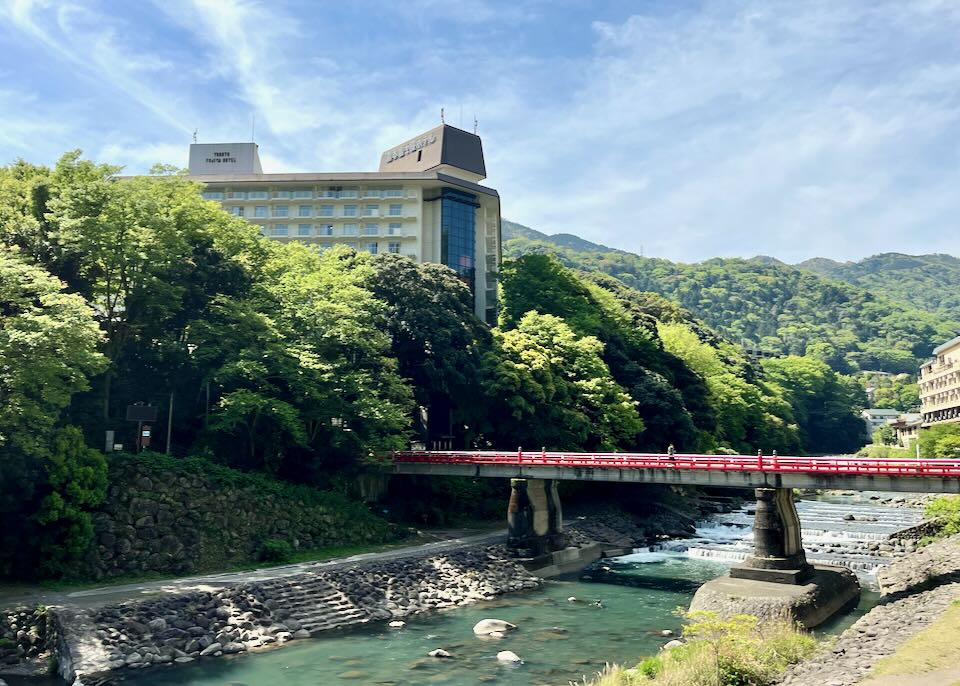
Yumoto Fujiya Hotel is a short walk from Hakone Yumoto Train Station.
Hakone-Yumoto is the gateway to the region, a small village at the foot of the Haya River valley that cuts into the eastern side of the Hakone caldera. The surroundings are picturesque, with steep, densely forested slopes and the gently gurgling river below. The village itself isn’t especially attractive, with a mix of wooden and concrete-block hotels and lots of private “bessō” (holiday house) vacation villas.
There’s not much to see, but Hakone-Yumoto makes a good base for exploring the area, with plenty of relatively cheap accommodations and a decent selection of places to eat and drink. It’s also the central transportation hub for trains to Gōra and Odawara and buses that fan out over Hakone.
Souvenir and craft shops line the main road. Pick up local specialties such as dried fish products, shiokara (salty, fermented seafood), umeboshi (pickled, dried plums), grated yam soba, sweet dumplings, and “hot spring buns.”
Hot spring hotels in Yumotochaya, our favorite is Hotel Zagakukan.
Another plus: some of Hakone’s best value onsen (hot spring resorts) are here, especially along the Sukumo River (which branches off the Haya) in an area known as Yumotochaya, and in the more tranquil and exclusive area of Tōnosawa, a bit further up the main Haya gorge.
Convenient for services, transportation, and eating/drinking, with many accommodations, though it fills up fast during busy periods and lacks the views and charm of villages higher up the mountain.
- Best Hotels in Hakone-Yumoto:
Kinnotake Tōnosawa • Hotel phone: +81 460-85-9800
Seikansou • Hotel phone: +81 460-85-5795
Yoshiike Ryokan • Hotel phone: +81 460-85-5711
Zagakukan • Hotel phone: +81 465-24-3636
Yumoto Fujiya • Hotel phone: +81 460-85-6111
Yamanochaya • Hotel phone: +81 460-85-5493
- Best Cheap/Midrange Hotels:
Oumiya • Hotel phone: +81 460-85-7345
Yumoto Station Hotel MIRAHAKONE • Hotel phone: +81 460-83-81082. Miyanoshita and Kowakidani
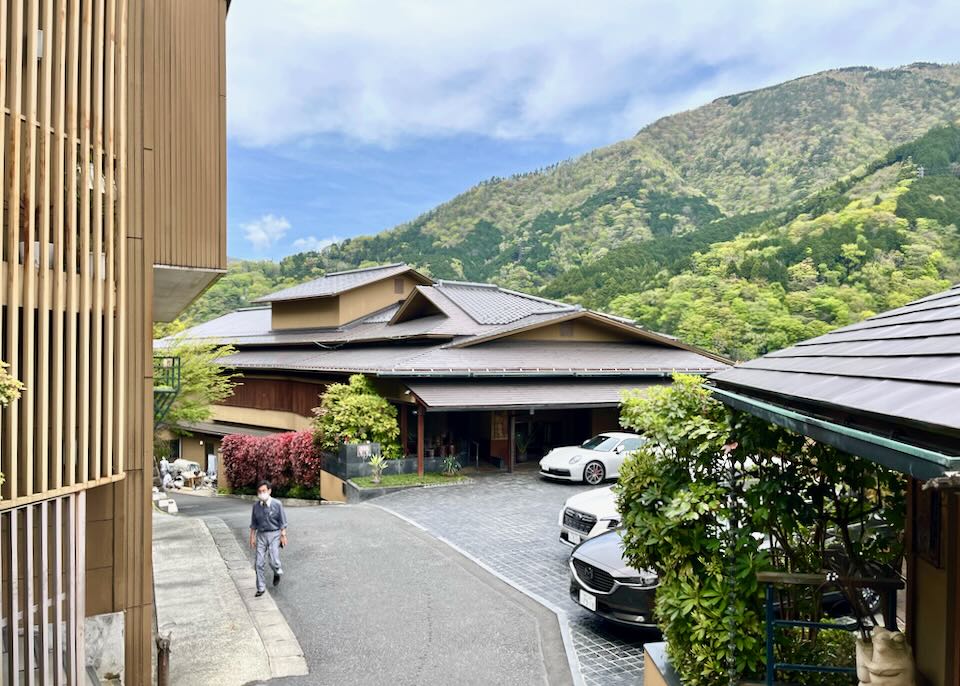
Ryokan Hakone Ginyu overlooks the Hayakawa River.
Hakone Tozan Line trains and buses wind up the Haya River Gorge from Hakone-Yumoto, passing through Ōhiradai to Miyanoshita, the first major village on the route up the mountain. There are a few things to see here and in neighboring Kowakidani, some quiet places to stay, a good selection of restaurants and bakeries, and a smattering of high-end onsen (hot spring resorts). It’s worth visiting the historic Fujiya Hotel even if you’re not a guest. It’s a series of buildings that have hosted celebrities since opening in 1891, and the main on-site restaurant is one of the best in the region.
The historic Fujiya Hotel restaurant serves French cuisine in the Main Dinning Room called, “The Fujiya.”
One stop further up is Kowakidani, where you can view Northeast Asian artwork in the stylish Okada Museum of Art or visit the huge Hakone Kowakien Yunessun spa resort, which has a fun waterpark section and more traditional Japanese hot spring baths (open-air and private).
It’s also worth making time for the Hakone Open-Air Museum (accessible via Chōkoku no Mori Station), a photogenic park studded with all sorts of sculptures and giant modern installations, enhanced by enchanting views and a traditional Japanese teahouse. Highlights include works by Brancusi, Rodin, and Giacometti, over 300 works by Picasso (including 188 ceramics) housed in a special pavilion, and 26 sculptures by Henry Moore.
The Hakone Open-Air Museum.
- Best Hotels in Miyanoshita and Kowakidani:
Fujiya Hotel • Hotel phone: +81 460-82-2211
Suishoen • Hotel phone: +81-460-86-0852
Ginyu • Hotel phone: +81 460-82-3355
XIV Hakone Palace • Hotel phone: +81 460-85-0111- Best Cheap/Midrange Hotel:
Hakone Onsen Guesthouse Tsutaya • Hotel phone: +81 460-83-9580- Best Hostels:
HakoneHOSTEL1914 • Hotel phone: +81 460-83-8897
Irori Guesthouse TENMAKU • Hotel phone: +81 460-83-93483. Gōra and Kiga/Miyagino
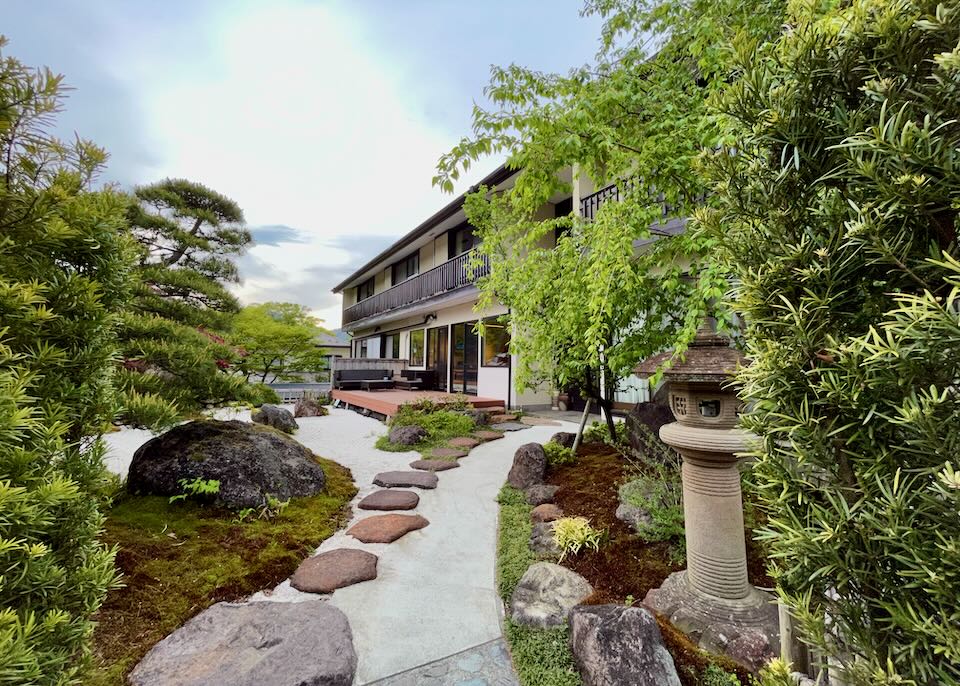
The Asante Inn guest house in Miyagino is great for couples and hiking.
The Hakone Tozan Line terminates at Gōra, a small village above the Haya River Gorge. It’s a small, compact settlement with a cluster of restaurants, shops, and hotels, with gorgeous views up and down the valley. The slope is very steep here: distances that look very short on the map can end up being punishing 30-minute climbs.
The Hakone Tozan Cable Car
From Gōra, the Hakone Tozan Cable Car (a funicular or incline railway rather than a typical cable car) runs steeply up to Sōunzan. Lovely, secluded hotels are scattered along the slope between Gōra and Sōunzan, accessible via several stops on the route. The Hakone Gōra Park is also known for its blooming flowers: cherry blossoms and azaleas in March and April, hydrangeas in June and July, and roses from May to June and October through November. There are also a couple of cafés and the Hakone Craft House, with glassblowing and pottery-making demonstrations. Nearby are a couple of mildly interesting museums, ideal for rainy or cloudy days: the Hakone Museum of Photography and the Hakone Museum of Art, which has displays of ancient Japanese ceramics and porcelain and a beautiful garden.
Far below Gōra (you can walk, but most people take the bus) lie the small neighborhoods of Kiga and Miyagino, on opposite sides of the Haya River – a couple of picturesque bridges connect the two, with a smattering of hotels on both sides. It’s another tranquil place to stay, though you’ll be relying on buses – rather than the train – to get around if staying here.
the Hakone Ropeway.
Ōwakudani
From Sōunzan, you can transfer to the Hakone Ropeway (this is a cable car) that shoots up to Ōwakudani, some 3,425ft (1,044m) above the Hakone region and the highest point on the “Loop.” You must change here again for the cable car down to Tōgendai.
It’s worth the trip to wander around the windy summit, take in the smoking fumaroles and vents, and the fantastic view of Mt Fuji to the north (assuming the weather is good). You can also sample “black eggs” (kuro-tamago) boiled in the sulfurous hot springs here and take in the views of nearby Mt Kanmurigatake (4,622ft/1,409m).
The view of Mt. Fuji from the ropeway car.
Gōra is a more tranquil area, with high-end accommodations offering some of the best views on the mountain. Almost halfway around “the Loop,” it’s also a convenient place to be based to explore the entire Hakone area, though the steep slopes can be challenging for some.
- Best Hotels in Gōra:
Byakudan • Hotel phone: +81 460-87-0010
Hyatt • Hotel phone: +81 460-82-2000
Madoka no Mori • Hotel phone: +81 460-83-3366
- Best Cheap/Midrange Hotels in Gōra and Kiga/Miyagino:
Gaku • Hotel phone: +81 460-83-8223
Emblem Flow • Hotel phone: +81 460-83-9120
Ajisai Onsen • Hotel phone: +81 70-4552-9724
- Best Hotel in Miyagino:
Asante Inn • Hotel phone: +81 460-83-88224. Sengokuhara
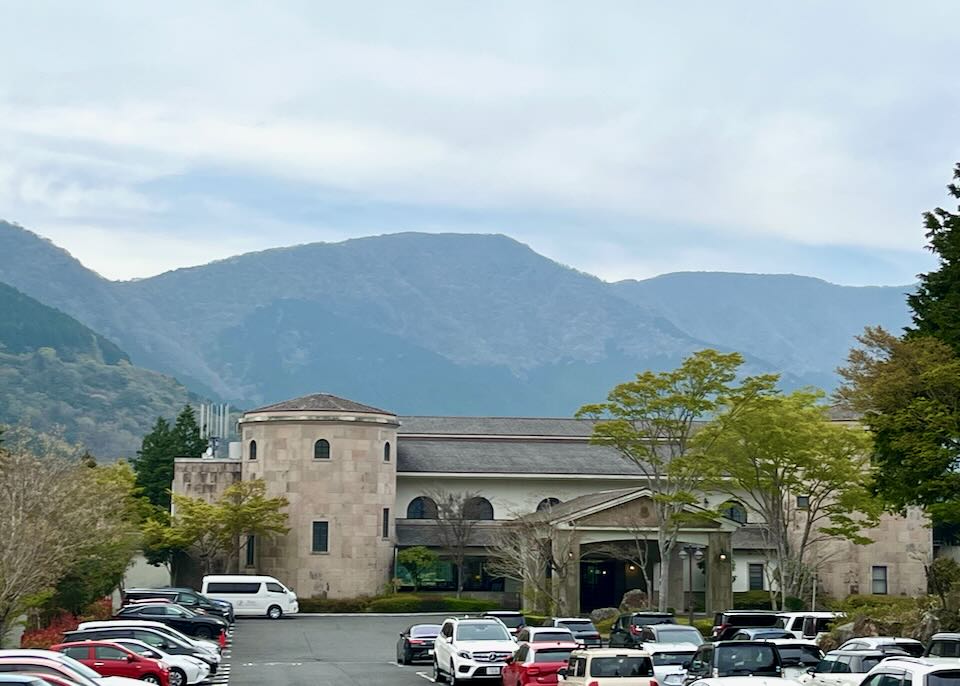
Behind the Sengokuhara Prince Hotel is the Daihakone Country and Golf Club at the base of the Hakone Mountains.
North of Gōra and the gorge, the Haya River flows through a high plateau just below the northern rim of the Hakone caldera known as Sengokuhara. It’s even more secluded, with generally high-end hotels and far fewer tourists. The scenery is less dramatic, with expansive panorama views of the surrounding peaks. Access is solely by taxi or bus, so exploring the region’s not as convenient.
It’s worth a detour primarily for its museums. The contemporary Pola Museum of Art contains an eclectic collection. It’s best known for its French Impressionism – paintings from Renoir, Monet, and Cézanne, as well as Picasso and Van Gogh. There’s also a large section of Japanese glasswork, paintings, and ceramics. In the village of Sengokuhara itself, the most interesting destination is the Lalique Museum Hakone, dedicated to the intricate glass creations of French artist René Lalique. Don’t miss the on-site Orient Express café, set in an original Orient Express Pullman train carriage with Lalique glass panels.
The Lalique Museum Hakone.
If you like glasswork, it’s also worth checking out the Hakone Venetian Glass Museum on the edge of the village. Featuring a range of stunning glass artwork from Murano (the Venetian island known for glass production) and highly Instagram-worthy installations.
North of the village, the hike up Mt. Kintoki is one of the best in Hakone. Allow 3–4 hours round-trip. The summit provides mesmerizing views of Mt Fuji, Lake Ashi, and the rest of the area (3,976ft/1,212m).
The other natural attraction is the Sengokuhara Susuki Grass Fields west of the main village, a prairie-like section of pampas grasses beneath the mountain ridge. It’s especially popular in the fall when the grass turns golden.
- Best Hotels in Sengokuhara:
Hiramatsu • Hotel phone: +81 460-83-8981
Highland • Hotel phone: +81 460-84-8541
Sengokuhara Prince • Hotel phone: +81 460-84-6111- Best Cheap/Midrange Hotels:
Family Lodge Hatagoya • Hotel phone: +81 460-84-8858
Yuya Yamazakura • Hotel phone: +81 460-84-8262
Trip7 Onsen • Hotel phone: +81 460-83-84345. Lake Ashi
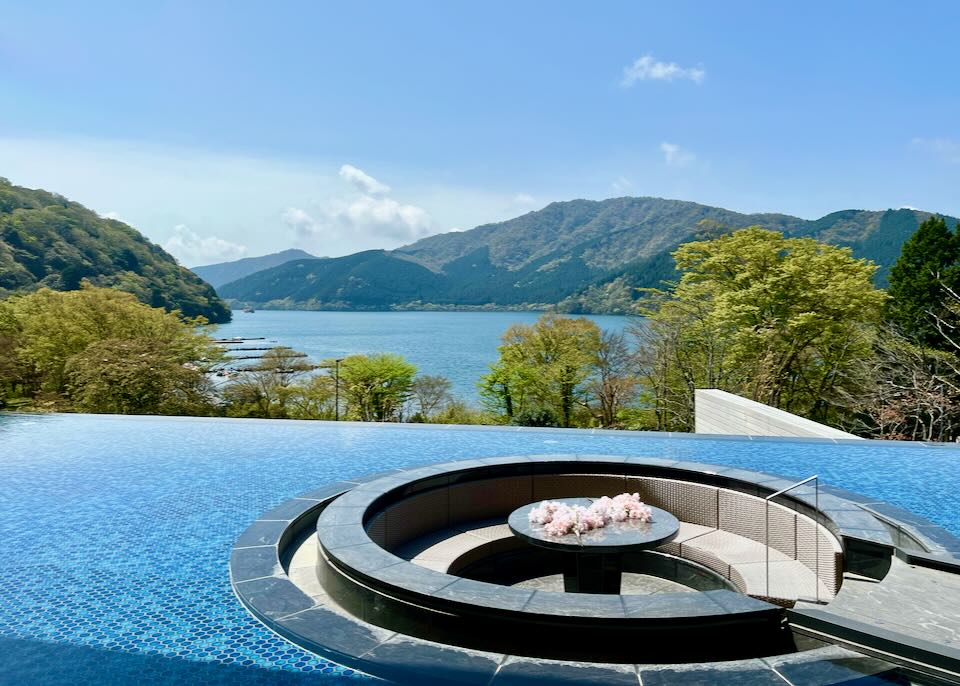
The view of Lake Ashi from the infinity pool at Hanaori.
Lake Ashi dominates the western side of Hakone, with clear blue waters surrounded by mountains. The area offers various viewpoints of Mt Fuji juxtaposed by the crater lake. It’s a gorgeous place to stay, and trips on the lake are a highlight of any trip to Hakone.
“Pirate ships” on Lake Ashi.
The “pirate ships” that shuttle visitors from north to south are a little out of place. There are three main areas for visitors: Tōgendai (north), Hakone-en (east), and two towns in the south, Hakone-machi and Moto-Hakone.The Hakone Ropeway terminates at Tōgendai, the tiny hub at the north end of the lake. There are a few restaurants here and a cluster of hotels that straggle up the slopes behind the lake; the Hanaori, close to the docks, offers some of the best lakeside views.
Mt. Komagatake, above Lake Ashi and the small temple at the top.
About halfway down the lake, on the east bank, Hakone-en is an odd little enclave of shops and kids’ attractions (petting zoo, aquarium, amusement center) – there are no botanical gardens here, but some maps show otherwise. Instead, the Komagatake Ropeway (cable car) shoots up to the summit of Mt. Komagatake (4,452ft/1,357m.) The top offers more spectacular views and a small temple, the Hakone Mototsumiya Shrine.
Back near the lake, the area is dominated by the vast Prince Hotel complex and the Dragon Palace Hot Spring. The day spa is designed to look like Byōdō-in Temple in Kyoto, with a connected ryokan (translated as “Ryuguden” in English). Most visitors take a bus to Hakone-en because the pirate boats don’t stop there.
The lake’s southern end is anchored by the busier twin villages of Hakone-machi and Moto-Hakone, both of which are served by the pirate boats from Tōgendai.
Hakone-machi is smaller, with a handful of shops, restaurants, and hotels around the docks. The Hakone Ekiden Museumk showcases the collegiate marathon relay race held between Tokyo and Hakone annually since 1920. At the northern end of the village lies the Hakone Sekisho Museum, which includes a replica Tokugawa-era guard post of 1619, one of many that once controlled the Old Tōkaidō Highway. From here, you can explore Onshi-Hakone Park, with its reproduction of the old Imperial Villa and fabulous views of Mt Fuji on clear days. You can make the short walk to Moto-Hakone via a stretch of the Old Tōkaidō Highway that parallels the main road, lined with giant cedar trees.
Heiwa no Torii (water torii) on Lake Ashi.
Moto-Hakone is busier, with the main attractions being the Narukawa Art Museum (of Japanese art) and the Hakone Shrine, a little further around the bay. The main Shinto shrine is at the top of a long staircase via several torii gates – an enchanting spot surrounded by woodlands.
The biggest draw for most visitors is back down at the lakeside, where some people wait 30–90 minutes to take a picture under the stunning vermilion Heiwa no Torii (water Torii) out on the lake. Come very early to avoid long lines.
You can ride various buses back to Hakone-Yumoto from Moto-Hakone, but you can also spend an enjoyable afternoon hiking through the mountains on the Tōkaidō Highway. The road rises up the slope from the lake, but most of its 5.5-mile (9km) length runs steeply downhill. It includes the original 17th-century cobbled sections, eventually following the Sukumo River valley and the main road to Hakone-Yumoto.
Amazake Tea House, a traditional, thatched way station dating back 400 years.
The walk is a good way to escape the crowds and has views. Along the way is the Amazake Tea House in a traditional, 400-year-old thatched way station (around 2km from Moto-Hakone). It’s named after its homemade “amazake” (a non-alcoholic, sweet rice wine) but also serves mochi, tea, and other drinks. You can catch the bus from there or continue to hike another 2.5km down to Hatajuku (see below) – allow 4 hours if you intend to walk the whole way to Hakone-Yumoto Station.
The Best Hotels around Lake Ashi
- Best Hotels in Tōgendai (North Lake Ashi):
Hanaori • Hotel phone: +81 460-83-8739
Auberge Au Mirador • Hotel phone: +81 460-84-7229
- Best Hotels in Hakone-en (Mid Lake Ashi):
Prince Hakone Ashinoko • Hotel phone: +81 460-83-1111
- Best Hotels in Hakone-machi & Moto-Hakone (South Lake Ashi):
Hakone Hotel • Hotel phone: +81 460-83-6311
Villa Bizan • Hotel phone: +81 460-85-1113
Hananoyado Fukuya • Hotel phone: +81 460-86-2121
Washintei Hogetsu • Hotel phone: +81 460-83-7788
Odakyu Hotel de Yama • Hotel phone: +81 460-83-6321
- Best Cheap Hotel around Lake Ashi:
Jemsty Inn Hakone Ashinoko • Hotel phone: +81 460-83-85356. Hatajuku and the Sukumo Valley
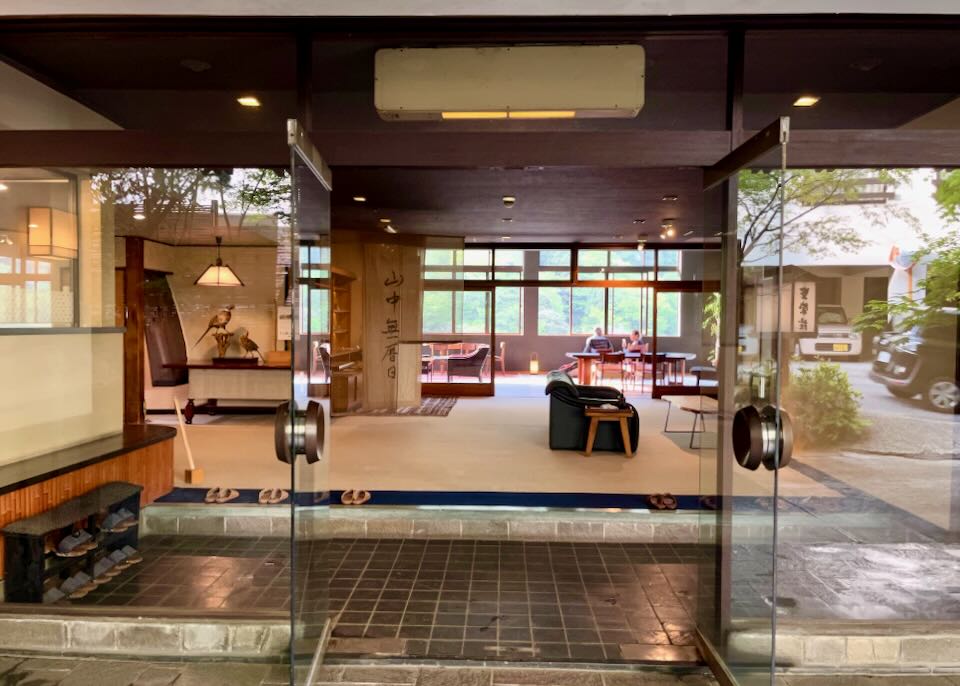
The peaceful lobby at Kijitei Hoeiso.
The Old Tōkaidō Highway Trail (and buses that shadow the trail on the main road) eventually drops into Hatajuku, an atmospheric village in the Sukumo River Gorge celebrated for its master artisans.
Hamamatsu-ya woodcrafts store in Hatajuku.
It’s especially known for Hakone’s unique “Yosegi Zaiku” technique, which involves matching the natural colors and grains of various local woods to create beautiful geometric patterns on carved goods (trays, bowls, boxes, etc.) Visit the Hatajuku Yosegi Kaikan (“Hatajuku Parquet Hall”) or one of several handicraft stores on the narrow main road through the village to see the best examples (Hamamatsu-ya in the center of the village is one of the best stores).
You can take a bus down to Hakone-Yumoto from here; otherwise, it’s a long walk along the road (which can be busy). The Sukumo Gorge drops down steeply from Hatajuku; though there are no hotels in the village itself, the Odakyu Hotel Hatsuhana is a wonderfully tranquil spot halfway down, with more hot spring hotels filling the valley in Yumotochaya, just before Hakone-Yumoto.
- Best Hotels in the Sukumo Valley (Yumotochaya):
Kijitei Hoeiso • Hotel phone: +81 460-85-5763
Odakyu Hotel Hatsuhana • Hotel phone: +81-460-85-73217. Odawara
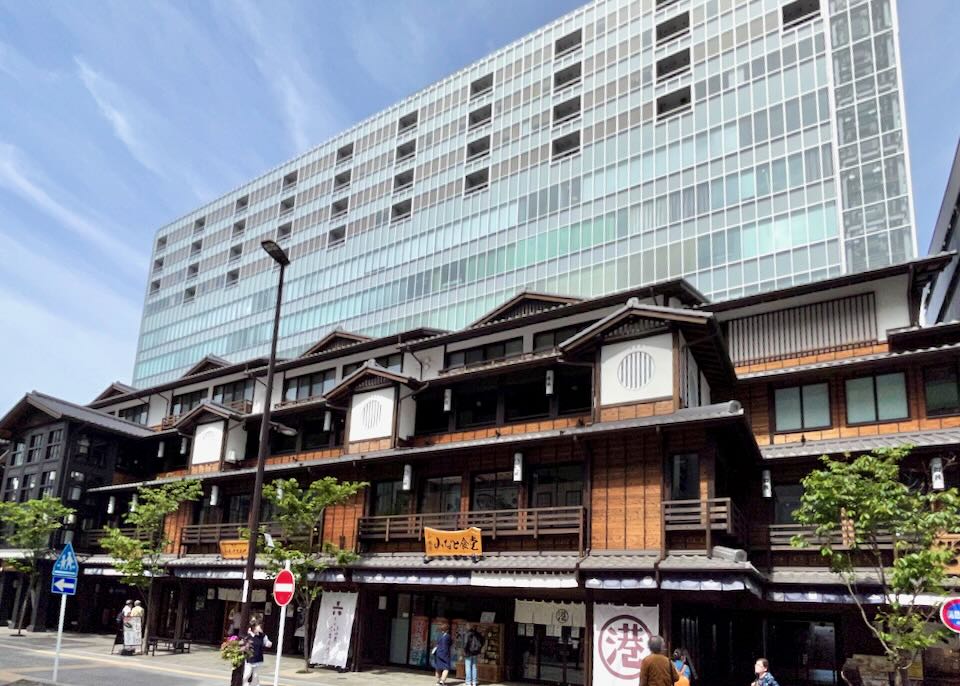
Tenseien Annex Hotel at Odawara station.
Most visits to Hakone by public transport begin in the historic castle town of Odawara, where there are fast Shinkansen (bullet train) links to Tokyo and Nagoya/Kyoto, and Hakone Tozan Line trains up to Hakone-Yumoto.
Though it’s well outside the mountain park and lacks the rustic atmosphere of the Hakone “villages,” traveling from Odawara only adds 15 minutes each way to your day (compared to Hakone-Yumoto). At night you’ll have much more to do (shopping, eating, and drinking, especially around the train station, though most things close between 8–9 pm). Dumping your luggage near the bullet train station is much easier than dragging it around the mountain. Another bonus is that hotels in Odawara are often the last to fill up during busy periods and are usually cheaper than similar places in Hakone proper.
The view of Odawara Castle from the top of Tenseien Annex.
The main attraction in the town itself is Odawara Castle, just south of the train station and visible from almost everywhere. The castle is one of Japan’s most significant, captured by Toyotomi Hideyoshi in 1590 after a famous siege and one of the bases of Shogun Tokugawa Ieyasu. Like many other castles, it was destroyed after the Meiji Restoration but was rebuilt in the 1960s. Today the museum inside does a fine job recounting this history, with a breezy observation deck giving panoramic views over the city.
There are only a handful of good places to stay in Odawara, primarily around the station – the best are listed below.
- Best Hotels in Odawara:
The View • Hotel phone: +81 465-20-4607
Tenseien Odawara Station Annex • Hotel phone: +81 465-23-1515
Business Hotel Okamoto • Hotel phone: +81-489-66-3331
- Best Cheap Hotels:
Good Trip Hostel & Bar • Hotel phone: +81-465-59-0120
Have a nice day! • Hotel phone: +81-465-46-8191Hakone Travel Tips
- Language
Though major hotels and some shops and restaurants may have English speakers on hand, and more people speak English in Hakone than ever before, don’t assume everyone will understand you. The staff at all the main ticket offices can communicate in English, menus usually have photos you can point at, and signage in the stations (and around the region) is translated into English. But try to learn a few words and numbers in Japanese if you can.- Getting Around Hakone
It is possible, with a bit of planning, to visit everything in Hakone via buses and or taxis (buses and bus stops usually have English translations). Renting a car can be a hassle in Japan because you need an International Driver’s License. Assuming you can get one, renting a car for a couple of days in Hakone is not a bad idea, assuming you want to explore beyond the main “Loop.” You’ll spend more money, but it will be faster and more convenient than public transportation, given how spread out everything is.- Hakone’s Nearest Airport
Haneda Airport (aka Tokyo International Airport) is the nearest major airport to Hakone. The fastest way to Odawara from the airport is to take a Keikyū Line train to Shinagawa (or a bus to Shin-Yokohama Station) and switch to the Shinkansen (bullet train). Keikyū buses also run direct to Tōgendai (2hr 40min) via Gotemba and Sengokuhara (2hr 30min).
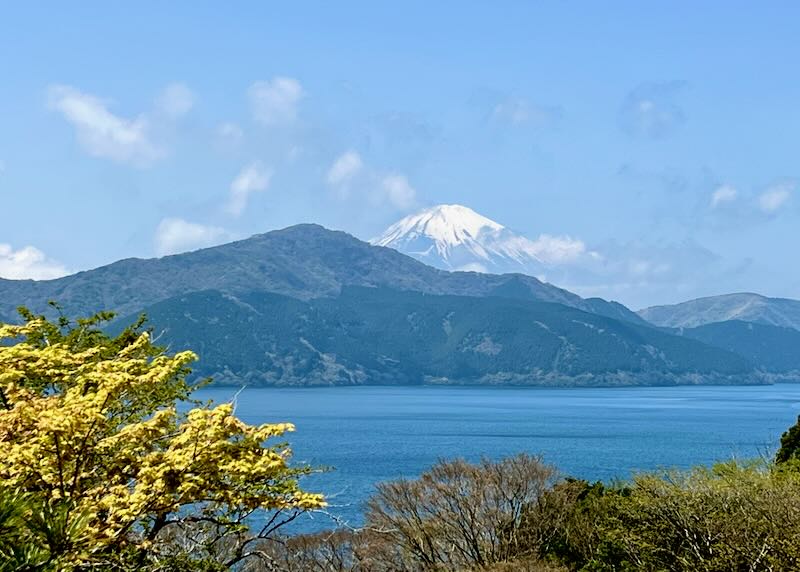
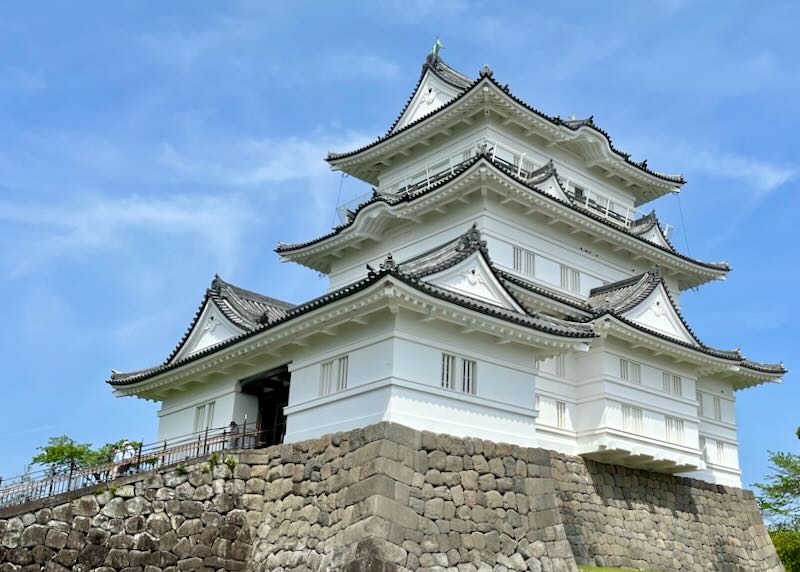
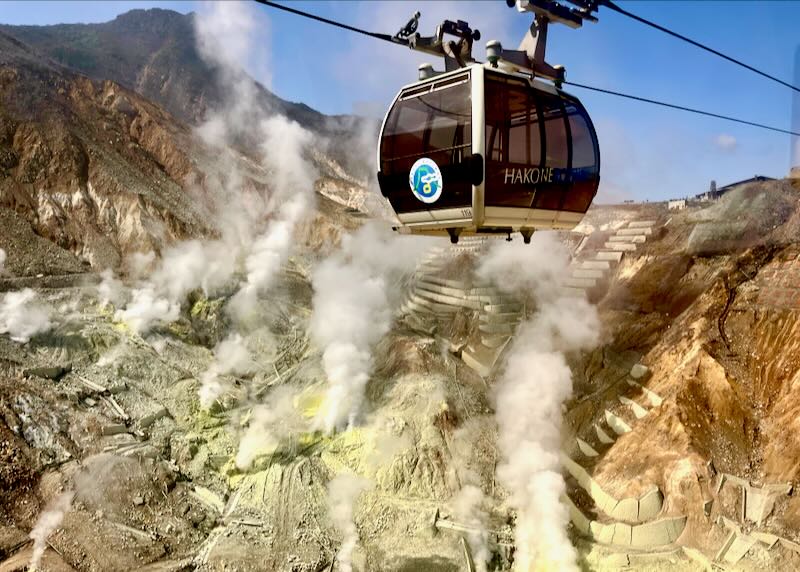
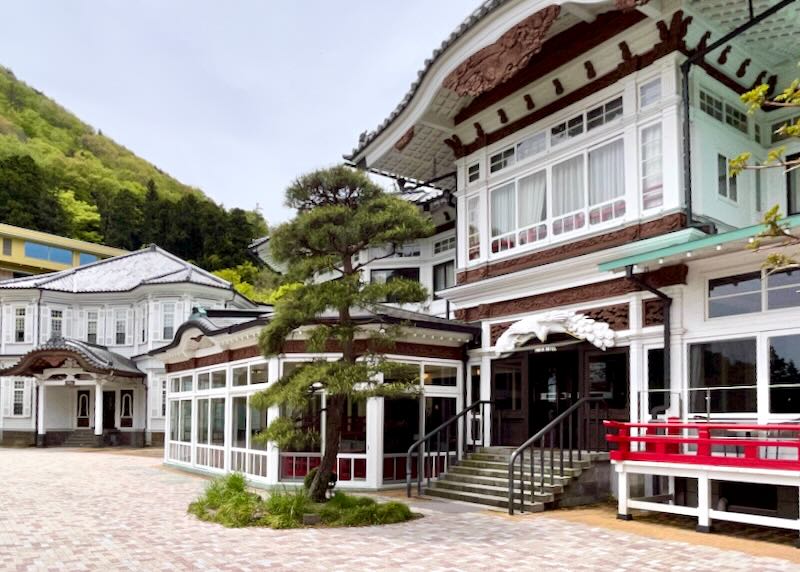
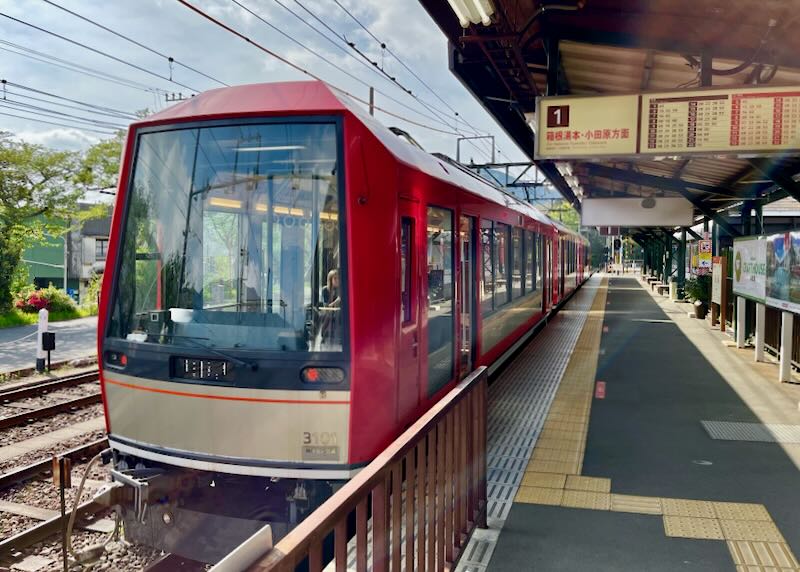
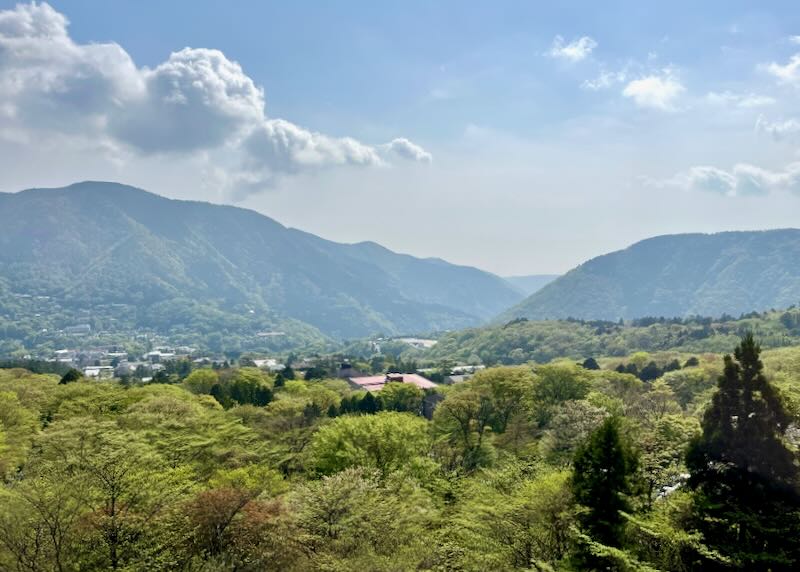
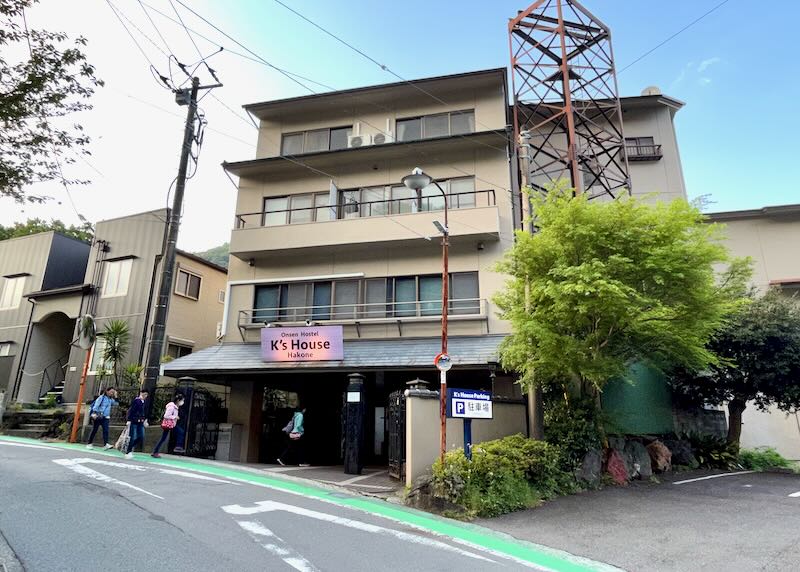
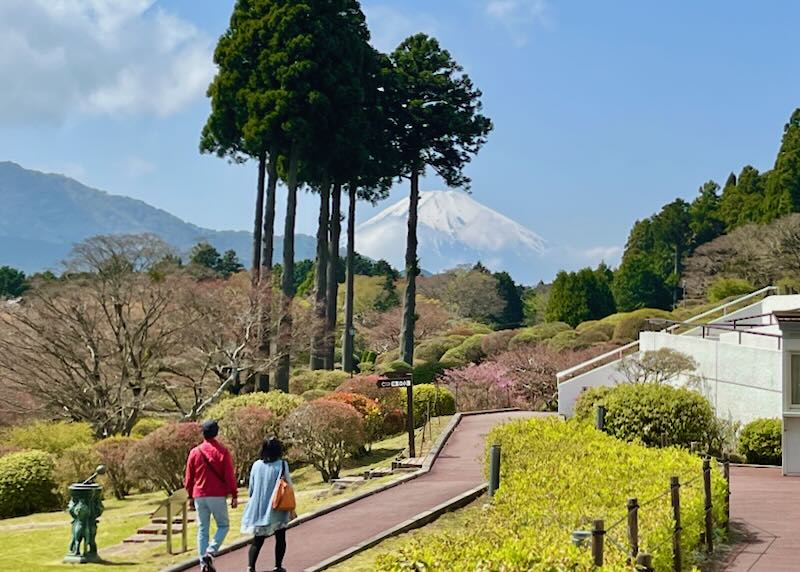
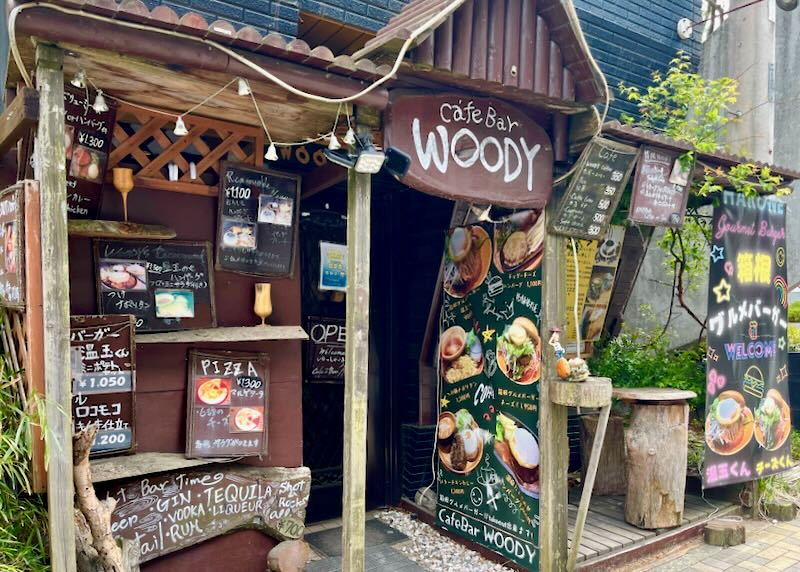
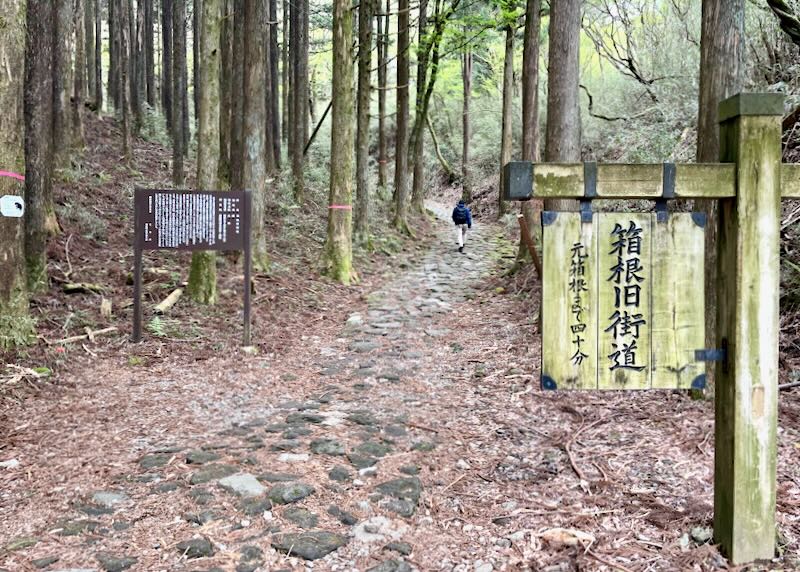
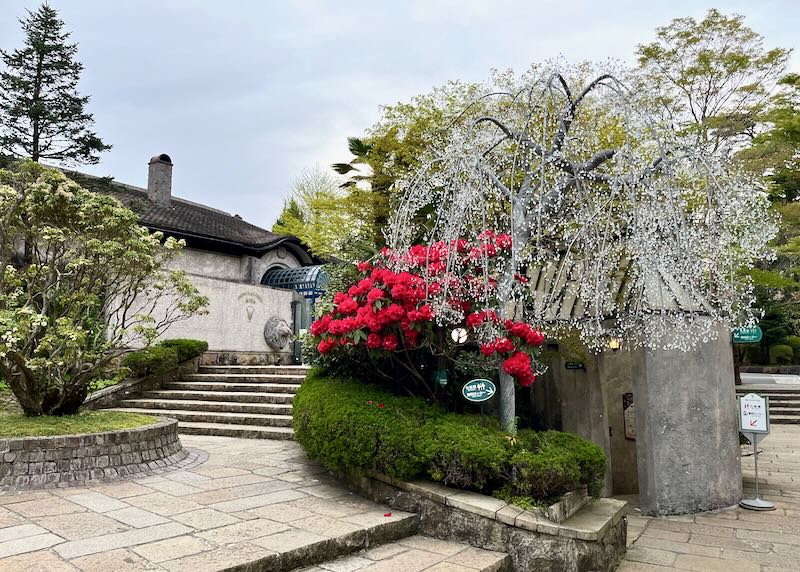
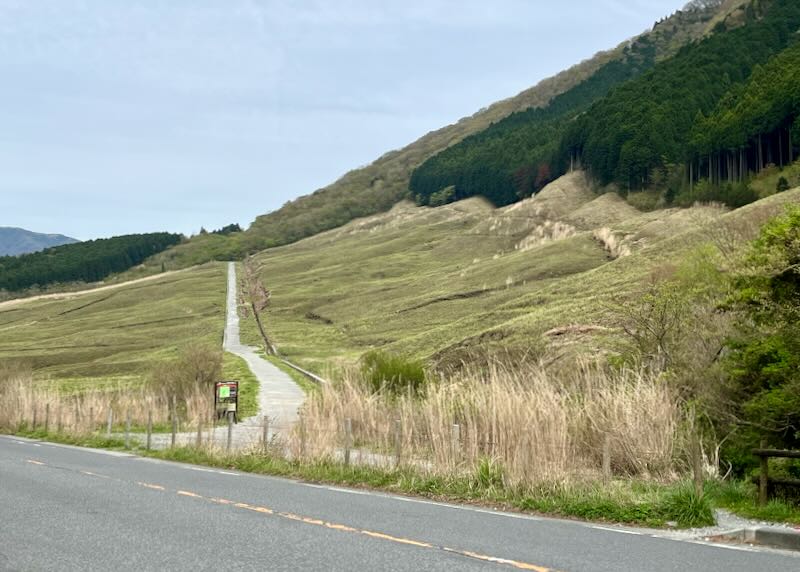
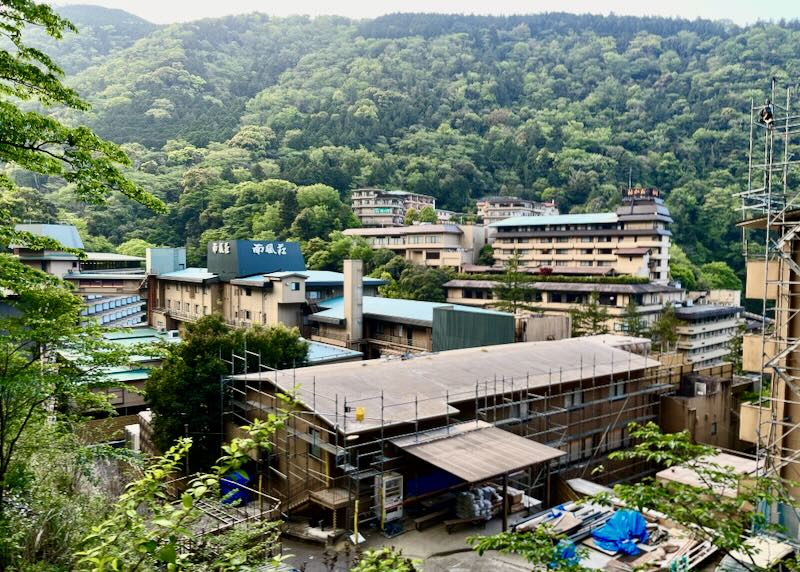
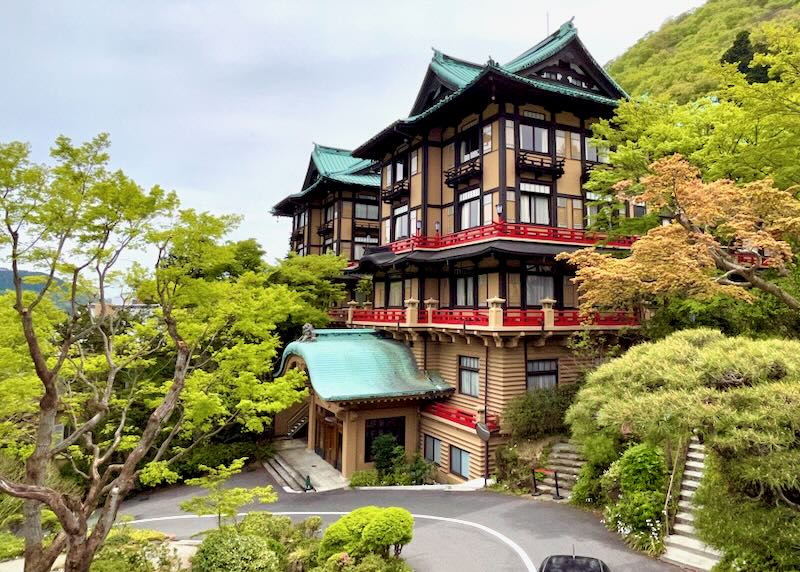
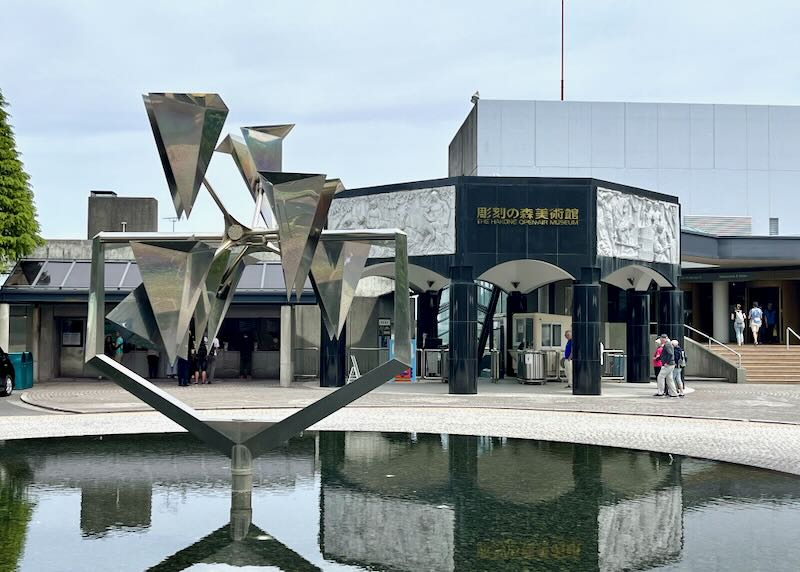
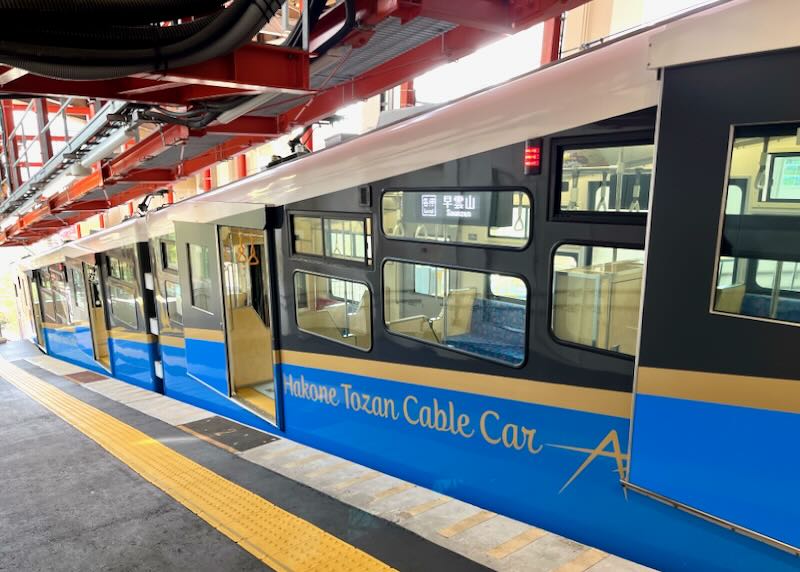
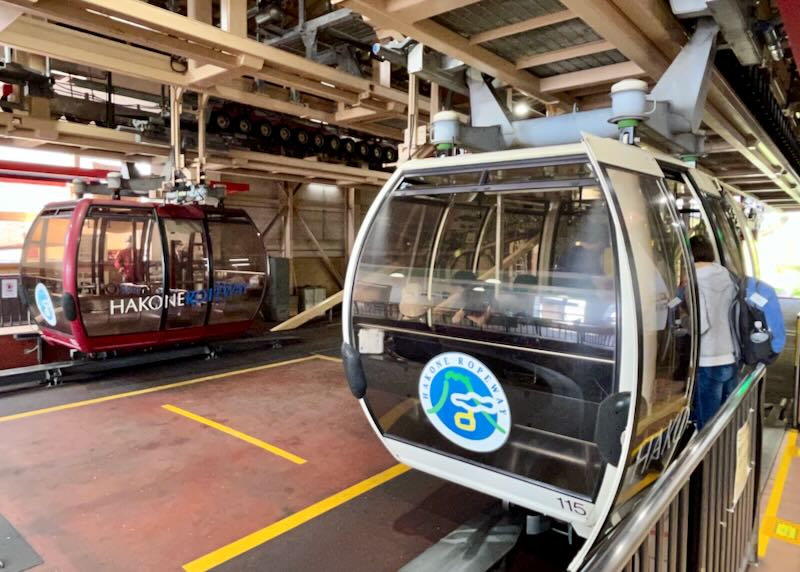
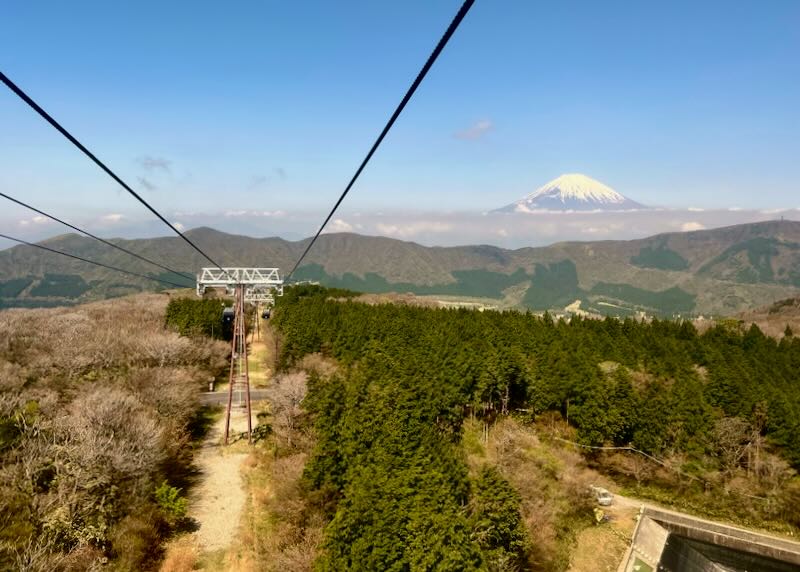
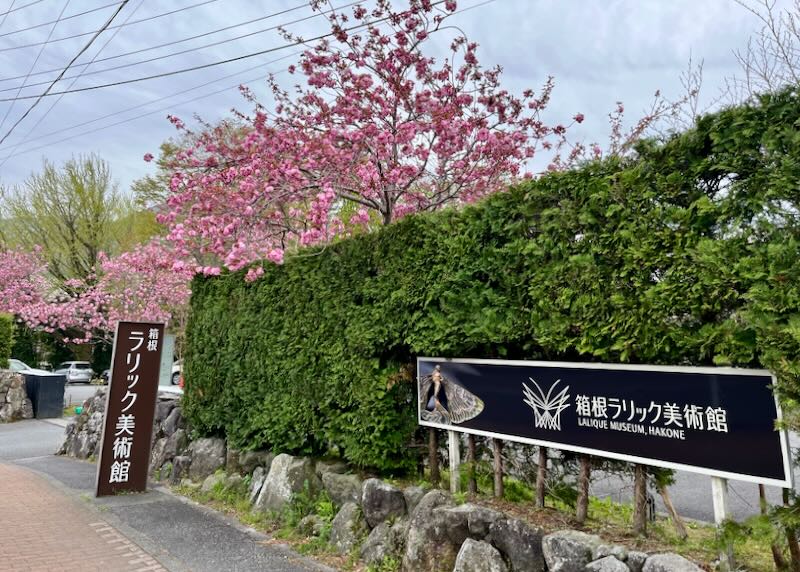
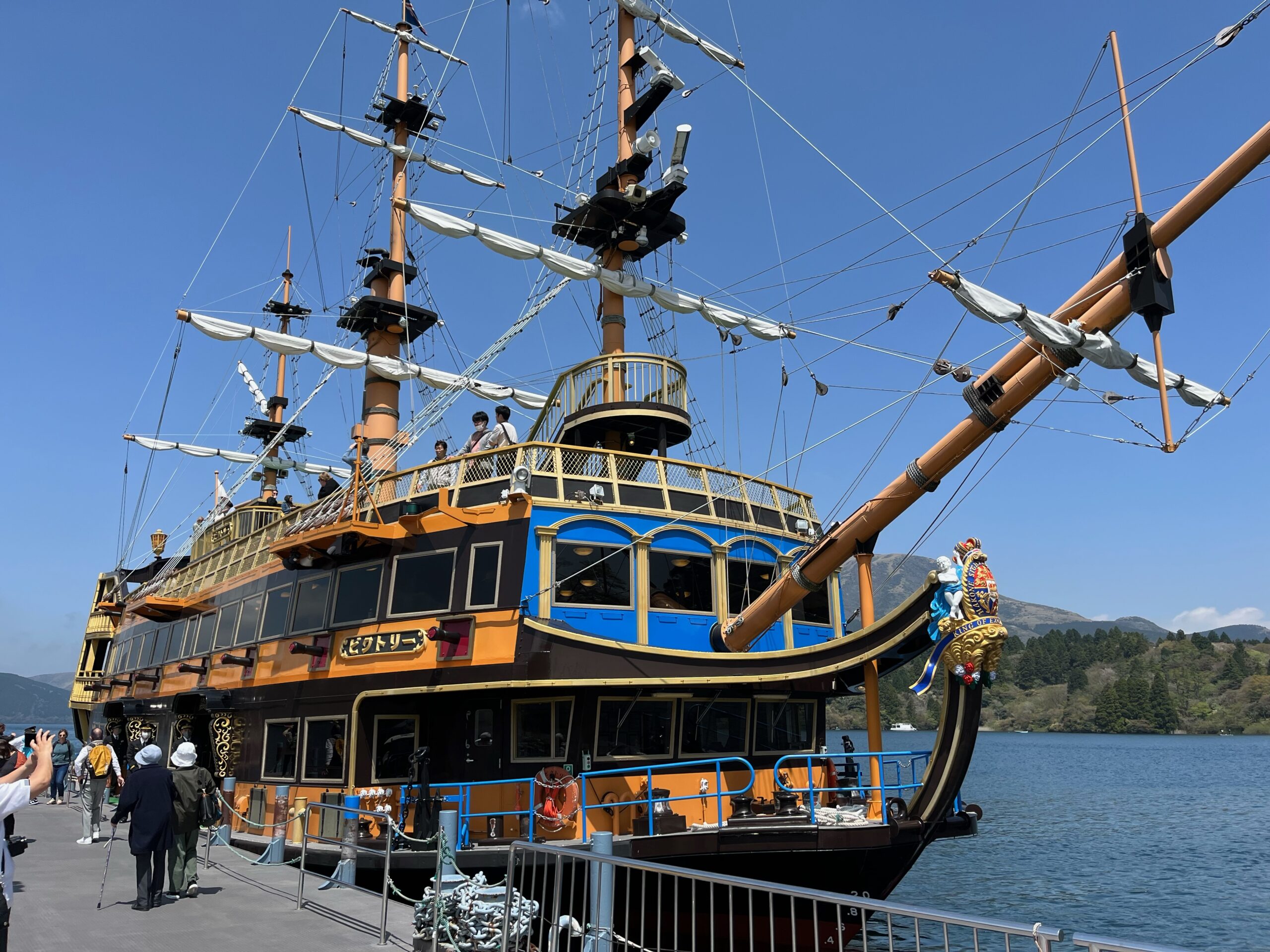
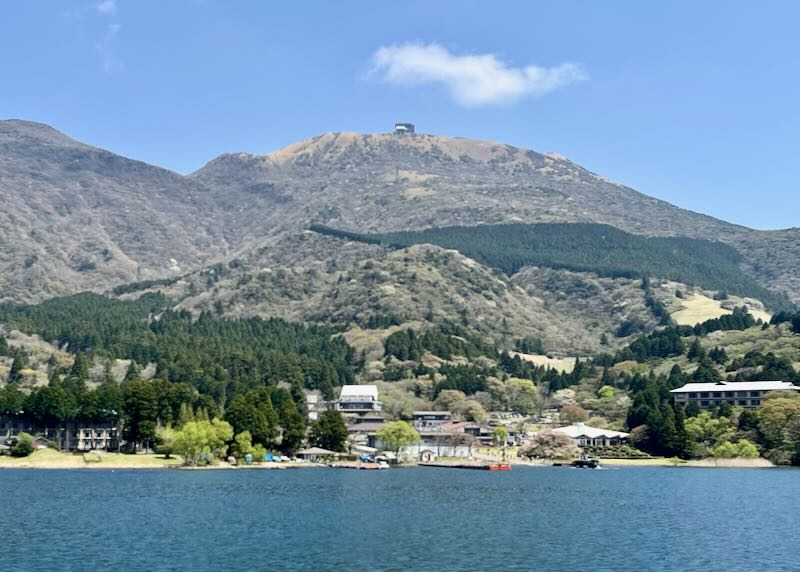
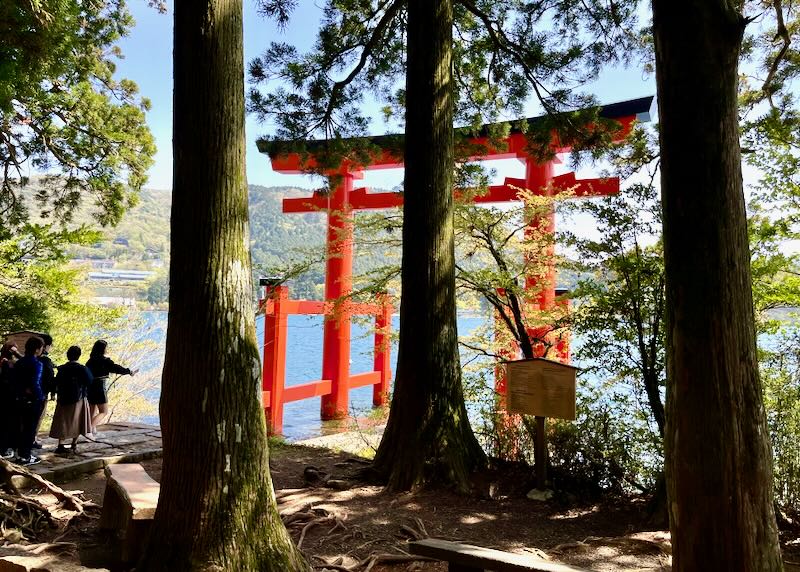
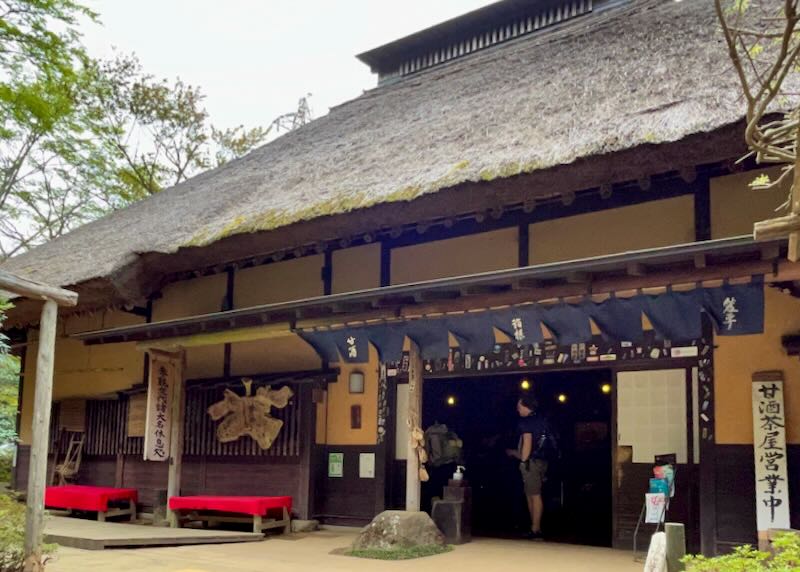
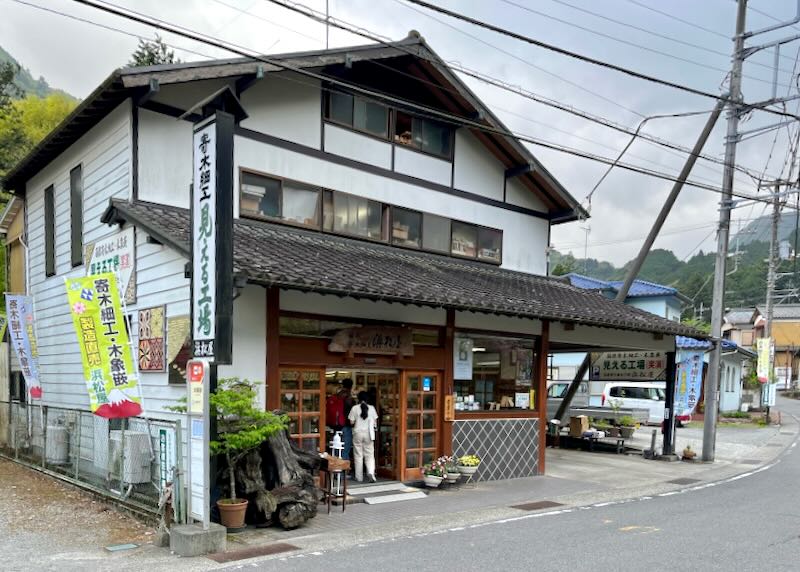
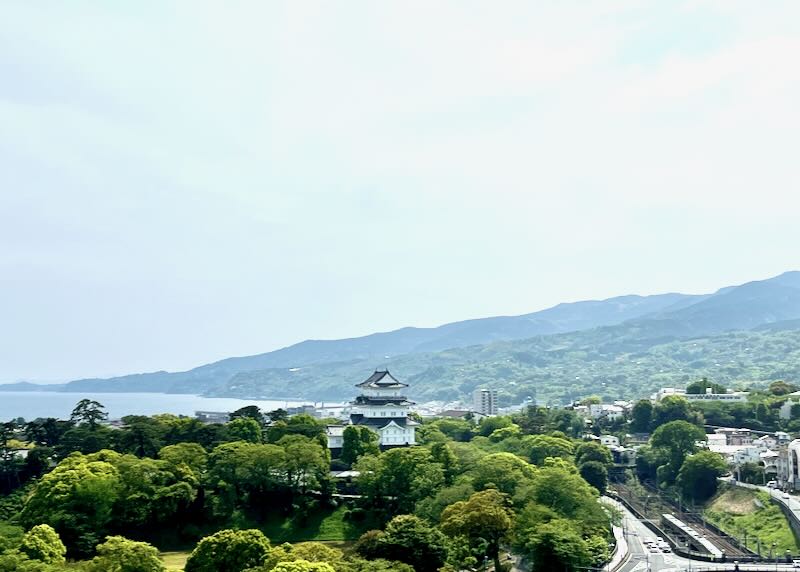
About Santorini Dave